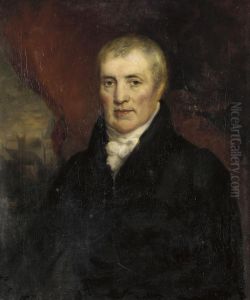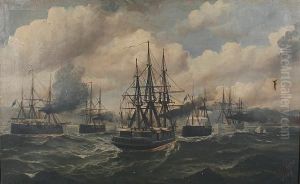Peter Flattner Flotner Paintings
Peter Flotner, also known as Peter Flötner or Peter Flattner, was a versatile German artist known for his work as a sculptor, medallist, draughtsman, and woodcut designer during the Renaissance period. Born in Thurgau, Switzerland, in 1485, Flotner moved to Nuremberg, Germany, which was a significant center for art and culture during the Renaissance. His extensive body of work and influence reflects the dynamism and intellectual currents of his time, making him an important figure in the Northern Renaissance.
Flotner's artistic abilities were diverse. He was particularly renowned for his work in sculpture, creating both religious and secular pieces that were innovative in their style and execution. His sculptures often featured intricate details and a delicate handling of materials, such as wood and bronze. Flotner was also a prominent medallist, producing medals that captured the likenesses and accomplishments of his contemporaries, thereby contributing to the growing practice of medal-making in the Renaissance as a means of commemorating individuals and events.
In addition to his sculptures and medals, Flotner was a skilled draughtsman and woodcut designer. His drawings and woodcuts covered a wide range of subjects, including mythological scenes, allegories, and designs for decorative arts. These works not only highlight his imaginative prowess but also his ability to translate complex ideas into visual form. Flotner's designs for furniture, household objects, and architectural elements played a significant role in the dissemination of Renaissance motifs across Europe, influencing the decorative arts well beyond the confines of Nuremburg.
Peter Flotner's career was marked by a blend of innovation and adherence to Renaissance ideals. His work reflects an engagement with classical antiquity, a hallmark of the Renaissance, yet he also incorporated contemporary themes and techniques, making his art both a tribute to the past and a reflection of his own time. Flotner died in Nuremberg in 1546, leaving behind a legacy that has continued to be appreciated for its artistic merit and historical significance. His contributions to sculpture, medal-making, and the decorative arts remain noteworthy, highlighting his role as a key figure in the Northern Renaissance and the broader tapestry of European art history.

